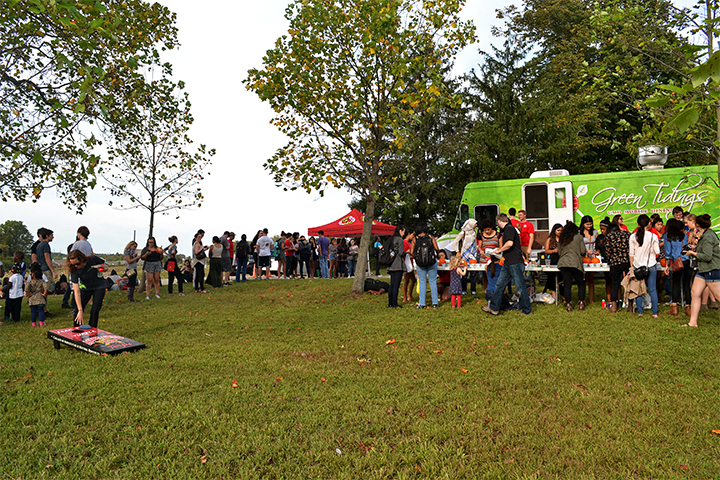Three years ago, a three-acre vegetable garden took root in Upper Marlboro as part of a University of Maryland pilot program to provide fresh food to this university. And after supplying tens of thousands of pounds of food and educating hundreds of students, the program plans to keep expanding.
Terp Farm, located about 15 miles from this university, concluded its three-year pilot program in late 2016. The farm produced more than 29,000 pounds of vegetables during this time — the majority of which went directly to this campus’s dining halls, according to its three-year review released this semester. Six thousand pounds of produce were also donated to hunger relief organizations including the Campus Pantry, a program that provides emergency food to university students, faculty and staff, the report stated.
The farm’s largest vegetable outputs are tomatoes and squash, though it also harvests produce such as cucumbers, peppers and watermelons.
The idea to create Terp Farm stemmed from the Sustainable Food Commitment — which aims for local and sustainable food to make up 20 percent of dining hall food by 2020 — back in 2012, said Allison Tjaden, Dining Services’ assistant director of new initiatives.
[READ MORE: Terp Farm increases crop production, student involvement]
“There was a lot of questions from students that I work with, saying, ‘We have these great community gardens on campus, can we take these produce from the gardens to the dining hall?'” Tjaden said.
Because of the size of the community garden program, that wasn’t a feasible idea, Tjaden said. However, she noted the conversation quickly switched to creating a production-focused farm that allows students to learn how to grow vegetables to bring to the dining hall, feed their peers and also “provide to people on campus who really need the food.”
The Office of Sustainability gave $124,000 to get the program going, and after three years, Terp Farm has $40,000 left. While the farm started with nothing three years ago, it now has an infrastructure and crop rotation, said Guy Kilpatric, Terp Farm’s lead agricultural technician.
Since the program’s inception, Terp Farm has been used as a resource for 19 classes, and the farm has hosted more than 2,000 people. A wide range of university members help man the farm, from students to agriculture faculty to interns and volunteers.
Meredith Brooke Epstein, a lecturer and adviser in sustainable agriculture, said Terp Farm teaches students the intricacies of food production, from planting to picking.
“Terp Farm gives our students the hands-on experiential learning that they need to succeed,” Epstein said.
[READ MORE: Terp Farm attracts UMD community with first Fall Harvest Festival]
Lillian Kahl, a current Terp Farm intern, is completing her second year in the two-year sustainable agriculture program at this university. During the year, she works 20 hours a week on the farm and said she has been able to learn the ins and outs of farm production firsthand.
“I’ve been able to learn [about the] planning … and marketing of a farm product,” Kahl said. “Your questions never go unanswered.”
Visiting students and interns are not the only ones who frequent the farm. The second annual Fall Harvest Festival in September, for example, saw 514 visitors — 119 of which weren’t students, according to the report.
The farm also has volunteers from the Integrated Life Sciences honors college program, which has a 12-hour service requirement that working at the farm fulfills. Students go to Terp Farm and then give a presentation on what they learned, said Zabrina Anzyl, the Integrated Life Sciences program assistant director.
The experience helps students “[learn] more about where food comes from, even about where the food on campus comes from,” Anzyl said.
Despite the pilot program’s end, Terp Farm is going to continue growing in the years to come.
“Terp Farm has easily been one of the most high profile and successful projects [for the Office of Sustainability],” wrote Andrew Muir, the office’s communications coordinator, in an email.
Kilpatric said he expects the farm to double in size in the next few years. The farm has done a lot for sustainability and food freshness, and there is a huge difference between the food grown at Terp Farm — which can be eaten fresh — and general store-bought food, he added.
“By the time [store-bought food] makes it to the plate, it may be several weeks or months from the time it was harvested,” Kilpatric said.
To Kilpatric, students have made the farm what it is because they are able to think in new and innovative ways.
Terp Farm “has brought parts of our community together that has an interest in things like food and sustainability and agriculture, and have created something that we can all be proud of,” he said.



